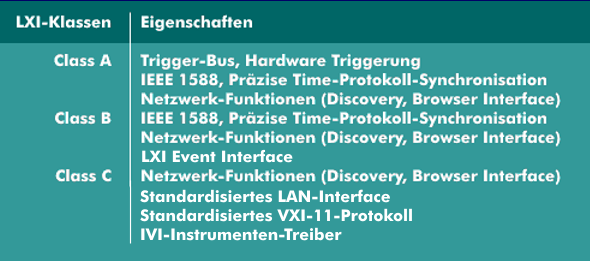LXI class
Ethernet is known to work according to a stochastic access method and can therefore only be used for time-critical applications to a limited extent. For this reason, LAN Extensions for Instrumentation( LXI), with which test and measurement devices can be coupled to Ethernet, has defined various LXI classes that support deterministic access for time-critical applications. There are three LXI classes "A", "B", "C" and C+, which differ in triggering and timing behavior.
LXI class A is the highest LXI class, which uses a proprietary trigger bus that is transmitted via a dedicated cable connection. This limits the maximum distance to 10 m. The trigger bus is a cable connection between the various LXI devices; up to eight devices can be connected to the trigger bus. The trigger bus can be connected in star topology or daisy chained.
Devices of LXI class B have the standard LAN interface and support the Precision Time Protocol( PTP) according to IEEE 1588. The time precision is about 40 ns. The basis in the 1588 protocol is the time synchronization of the devices involved, which compensates for runtime differences. LXI class C devices have a LAN interface and a browser interface, but do not support a trigger bus. This usually applies to existing measuring devices that are not to be retrofitted. The time reference is created by a time stamp. The LXI class C+ devices have a standard LAN and a web browser interface as well as a Wired Trigger Bus (WTB), which limits the possible distance to a few meters.

